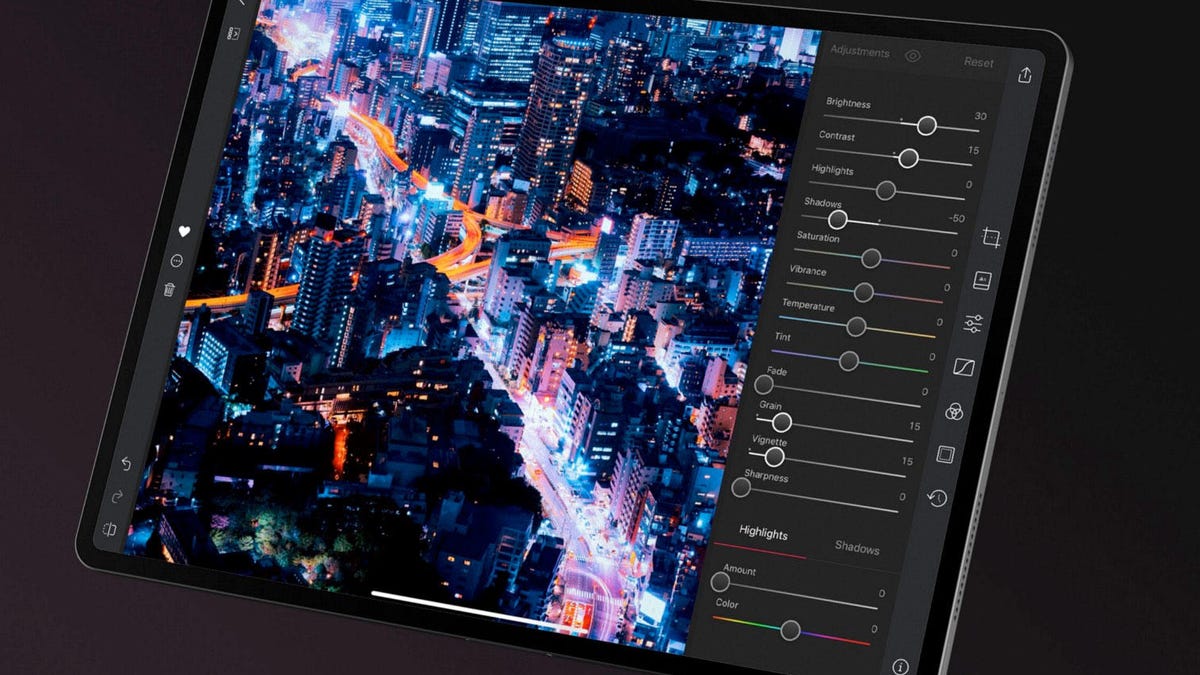Lightroom photo editing gets more competition from Darkroom, Luminar
Adobe customers might not switch, but there are plenty of new photographers entering the market.

The Darkroom photo editor for iOS now is tailored to work on Apple's iPads.
Two software tools, Bergen's Darkroom and Skylum's Luminar, just got a bit better at challenging Adobe's dominant Lightroom software for editing and cataloging photos.
Darkroom, an iOS app, now has a version just for iPads for a better look at the photos you're editing, more room for catalog operations and support for external keyboards to speed things up. And Luminar, for MacOS or Windows machines, added a library feature that makes it more adept at organizing photos, not just editing them. The updates arrived this week.
It'll be hard to woo photographers who are deeply embedded in the world of Lightroom. You can't just move your photos from one app to another because nondestructive editing is a proprietary process. But Lightroom isn't cheap -- it starts at $120 per year -- and new photographers might opt for more affordable alternatives, particularly those with a one-time price instead of a recurring subscription.
Phones come with photo tools like Apple Photos and Google Photos, but a lot of enthusiasts want more for their digital photography. Lightroom is still a strong contender for those with a photo budget: Adobe is well known, the software works on Android, iOS, Windows and MacOS, and the internet is awash with YouTube tips and plug-ins to help people get more out of it.
Darkroom, integrated with iCloud-synced photos instead of using a separate library, is a relatively small step for photographers who have iPhones and iPads. It's free but charges for various updates to improve its abilities. Don't expect an Android version anytime soon.
Luminar's libraries improve photo organization and also make it possible to synchronize edits from one shot to others, Skylum said. It's not as fleshed-out as Lightroom's catalog, but Skylum is working on improvements for its $69 tool.
On the Luminar roadmap: the ability to create virtual copies, a Lightroom feature that lets you apply a different set of edits to the same original photo; library search tools; the ability to edit metadata such as copyright information that accompanies photos; and a migration tool to help Lightroom photographers make the switch.
Another older contender just got an upgrade too: Phase One released Capture One Pro 12 in November. Other alternatives include DxO PhotoLab, Corel After Shot Pro and ON1 Photo Raw.
Adobe says it's happy to have the challenge.
"Competition is great for the industry," said Tom Hogarty, director of photo-related product management at Adobe. "When photographers have options, the choices they make put pressure on software developers to listen more closely to the customer and the industry."
CNET's Holiday Gift Guide: The place to find the best tech gifts for 2018.
Cambridge Analytica: Everything you need to know about Facebook's data mining scandal.

